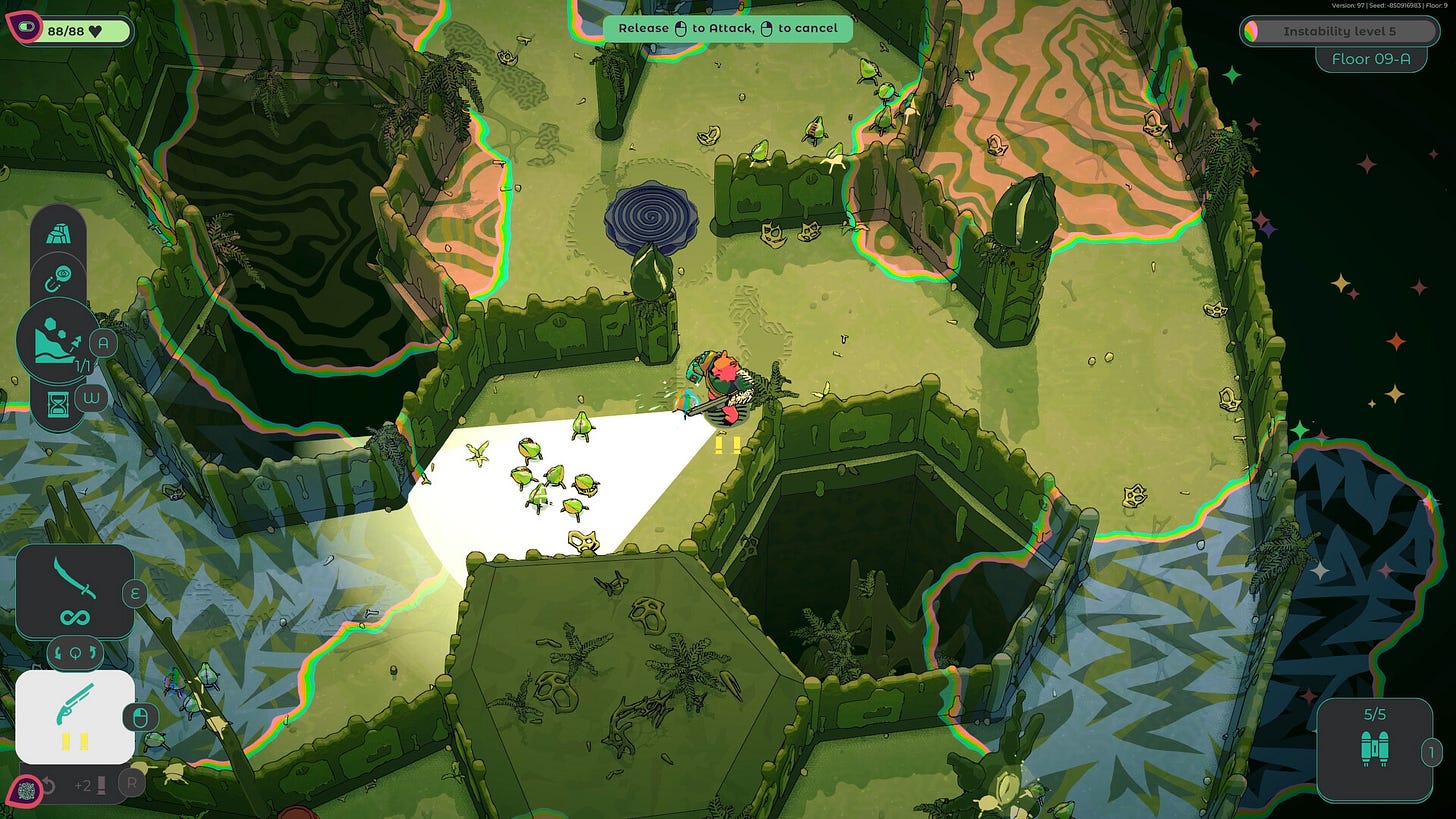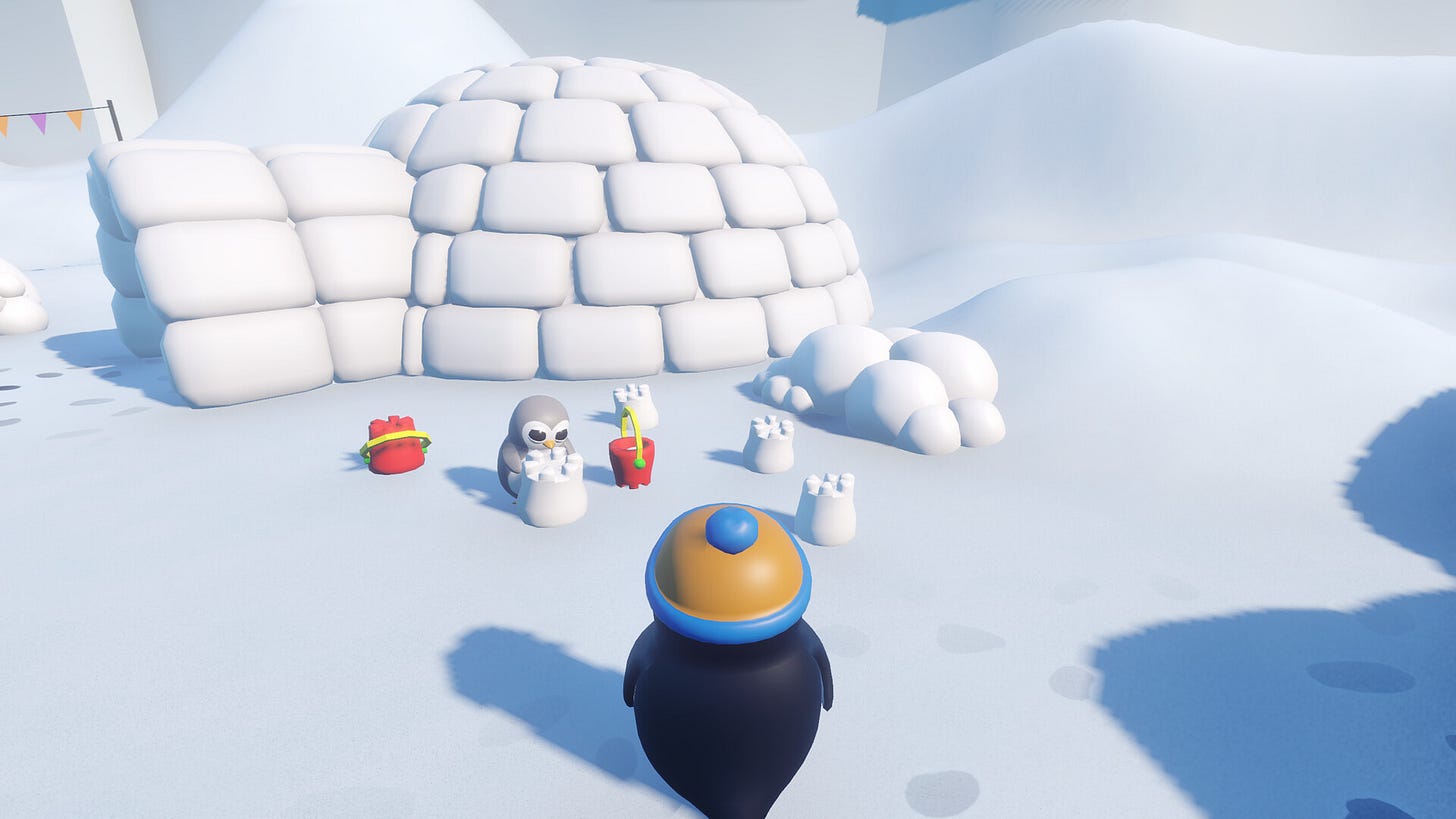My guest for this issue of Multiplier is Chantel Eagle. Chantel is the director of Little Pink Clouds, a Victoria-based studio currently working on its debut release Letters to Arralla. Prior to this, Eagle was a producer at Summerfall Studios. These days, you can find and follow them on X.
Fergus: I’m a big fan of the Diablo games and one of my favorite anecdotes about the development of the RPG that all but coined the term clickfest is that it was originally conceived as a turn-based adventure akin to the original Rogue or Nethack.
Midway through development, the idea of transitioning to real-time gameplay emerged as a popular but divisive possibility. Eventually, the whole team sat down to settle the issue. They playtested both builds and overwhelmingly voted to go with the latter, or so the story goes.
These days, It’s so hard to imagine a version of Diablo that’s decoupled from the frenetic pace the series is known for. It just goes to show that things like game speed and the tempo of play don't really get enough credit when it comes to game design. It's so obvious how much they add and define the way a game feels.
Diablo is obviously a very high profile example but I don’t think you have to look very hard to find the same dynamic in both games developed in Australia and abroad. From Enter The Chronosphere to Polar Pathway, it's easy to imagine a given game with a different pace but hard not to see that variant as a new thing entirely. Maybe it's time for timing to get more credit?
Chantel: It's interesting you mentioned Rogue and Nethack because those games were direct inspirations used by the developers on Chronosphere along with another, Frozen Synapse.
The team at Effort Star developing Chronosphere went through extensive rounds of testing to get the pacing and game design to feel just right. They wanted to be absolutely sure that the game could seamlessly transition based on a player's turn-based preference and not rely on twitchy reflexes which has always been a barrier for some players in terms of accessibility. On one hand, you could approach the game like chess: slow and methodical. Calculating every possible move before anything had played out on screen. Or you could flip it on its head, like I did, and transition into a frenzied, fast-paced, dodge-rolling bullet hell.
Unconstrained by a grid, I played as if I could outsmart the enemy AI through quick reflexes and pure human brain power (I could not, but one can pretend). These affordances to the player feel like the best of both worlds, coupled with impressive enemy design, dazzling particle effects and a full spectrum palette, it felt like something I'd never seen or played before!
To make a game feel exciting with both fast and slow pacing sounds like a development nightmare, but the Effort Star team have braved it and have come out the other end with an absolute gem. Polar Pathways tackles pacing from a more traditional standpoint. They've structured their gameplay into thematic levels. Each one takes the main character, Peng Wing, on a stage of the famous "Hero's Journey". Their playable demo only showcases the first of 5 levels, each with its own designated palette and environment in order to set the mood as you traverse through polar environments to reunite with your partner.
Like any classical journey, each phase feels unique but plays a part in a grand narrative, the story's cadence will carry the player along on a whimsical journey through a glacial environment. The pacing has been deeply thought out by the developers as this game falls comfortably into the walking (or in this case, tummy-sliding) simulator with small moments that offshoot from the main arc with adorable environmental storytelling, visual puzzles and physics-based fun in the snow.
Fergus: I think when you look at both those examples, the through-line is something to do with control. Pacing and timing are key factors that very directly shape the way you feel when you’re playing a given game. If lots of stuff is happening on-screen very quickly, it can be stressful. When the gameplay is more leisurely, chances are you’re probably feeling a little bit more relaxed. In games with more traditional pacing like Polar Pathways, the push and pull of that emotional arc has been fixed or predetermined by the developer ahead of time. However, when we’re talking about titles like Enter the Chronosphere that goes out the window. We’re talking about games that are designed to give the player more control and agency when it comes to how they feel over the course of the experience.
The end result of this is not entirely organic though. It’s just a different kind of intent on the part of the designer or developer involved. It’s worth noting that these two approaches aren’t the only ones out there nor are they mutually exclusive. There are plenty of games out there that gear-switch between more authored and organic pacing. I think these concepts also map pretty neatly onto tabletop games, though the difference there is that the pace of play is manually-enforced versus the more automated consistency found in video games.

Chantel: That's right, if you whittle down the concepts to their core, it's all about how the game designer wishes to impart their way of 'control' in order to facilitate a player's gameplay experience. This comes in many different shapes and sizes, and now that you mention it, does come through very clearly with tabletop games. If a game's design for control was completely organic, you'd pretty much end up with Dungeons & Dragons.
That's not to say D&D doesn't have dozens of rulebooks which set the guidelines for play, but the play itself is entirely spontaneous and up to imagination. So much of the agency is given to the player to completely control the direction of each game with invisible, and usually quite flexible, boundaries set by the DM. Whereas card games, the distant relatives to D&D, you'd get the complete opposite. Rulebooks become holy text with explicit win & lose states, very little-to-no flexibility to deviate from the predetermined rules, or controls, designed by the creator. I mean just look at any casino.
This concept of gameplay control has been thoroughly discussed and explored by developers for decades, and yet we keep trying to find new ways to express it. It's a constant dance between designer and player, and how much fun can be derived from a game's newly-designed "rulebook". Players all have different preferences of what type of control they're afforded, You could probably create a control spectrum, with drunk D&D at one end, to casino Blackjack on the other.
Somewhere along that line you can place every game ever made based on how stringent their rules are to guide the player through an experience on their screen. I think you'll find a very even spread on what players enjoy most along that line, which is excellent news for all developers! There's a player for every game.






